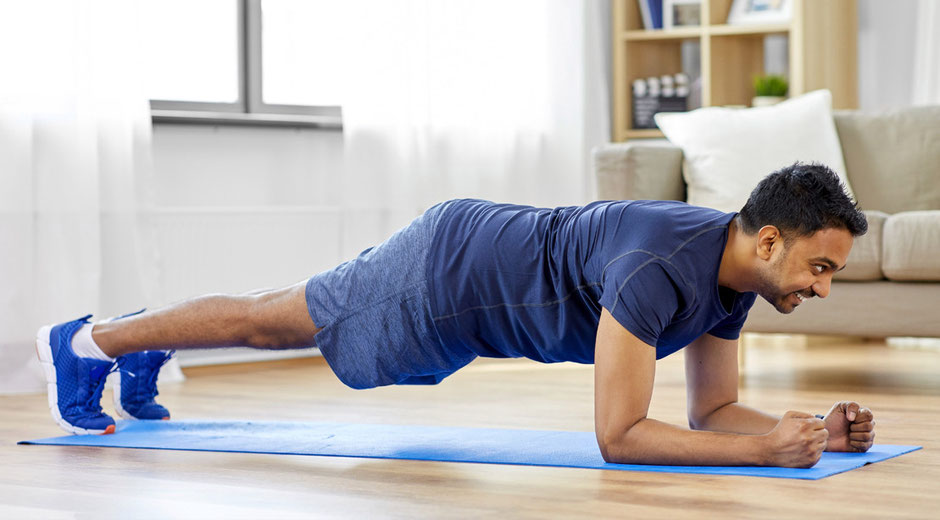Right now, and for a few more weeks at least, we all need to stay home. Without access to gyms, golf courses, tennis courses, swimming pools and other sports and recreation facilities, we are left with only a few options to stay active: yoga, running, cycling, or resistance training from home.
I know some people might think that training from home without any equipment isn’t effective. Well I think it depends how you do it. By changing the training variables, you can actually get a very effective workout that will help you keep or build muscle mass and strength.
Now, before we get into it, we don’t know you personally, so we can’t tell you exactly which exercise would be beneficial for you and certainly can’t give you a “one size fits all workout program”. However, the following tips and concepts can be used and applied by everyone.
So here are our tips to build the best workout routine at home:
Focus on single leg movements
A great way to build or maintain muscle mass or strength is to focus on single leg exercises: single leg squat, split squat, Bulgarian squats, curtsy lunges, and if your mobility and balance allows, pistols. Anybody who has done any of these knows how difficult these movements can be, since you're carrying a huge amount of body weight with only one leg. In addition, these exercises will help you work on your single leg stability, great for injury prevention and can help identify muscle imbalances.

Change the tempo
The tempo is a variable that is often disregarded or forgotten by regular gym goers. The speed at which you are executing the exercise has a massive impact on the results you will get from your training session. Slow speeds increase the muscles’ time under tension and help the development of muscle mass and strength. So for example in a squat, instead of going up and down as fast as you can, slow things down. Focus on going down in 3 or 4 seconds, and even add a 2 or 3 seconds pause at the bottom before going back up.
Combine exercises
Instead of doing regular sets where you do one exercise for several sets, try to combine exercises. Supersets, tri-sets, lower-upper body, or push/pull combinations are good ideas. Once again, these are great options to help with muscle growth and strength, as well as blood flow and circulation. It’s also great to avoid monotony and keep the workouts fun.
Include isometric training
Isometric training is a fancy way to categorize exercises where your muscles tense up but don’t actually move. In other words, you pick a position and you hold it. Planks, wall sit, squat holds, floor bridge holds, hollow holds are some examples. These sessions won’t necessarily leave you sore or tired, but your central nervous system will definitely fatigue pretty quickly.

Use shorter rest periods
Focusing on metabolic stress workouts is also a great idea for muscle growth. So use rest periods of 30 or 60 seconds between your sets. And that will reduce the overall time of your workouts, useful when you have to juggle between work, taking care of the children, and keeping your house in order.

Increase workout frequency
Considering we’re currently cooped up at home, and might keep working from home for some time after the circuit breaker period is over, we’re not getting a lot of movement during the day. So instead of doing a 50 minutes workout twice a week, focus on sessions of 20 or 30 minutes and increase the frequency, 4 or 5 times a week. However, don’t repeat the same exercises every day, add variety and switch things up every session, and make sure you get enough rest in between sessions.

Wrapping up...
Hopefully, these tips will help you build an effective training routine at home. And even once the circuit breaker period is over, you can use these tips to train on your own at home if you are not able to make it to the gym or in your hotel room when traveling.
Just always make sure your surroundings are safe, never over do it and don’t try to progress too quickly.
If you fancy doing this yourself but don't feel like writing your own programme then get in touch with us and we'll write one for you that's perfectly tailored to your goals!
To your health, happiness and longevity,
The Levitise Team
P.S. If you love this blog post then do check out our fortnightly newsletter where you'll get the freshest content on health, nutrition and fitness delivered straight to your inbox. Don't miss out and sign up here with just your name and email.

Write a comment